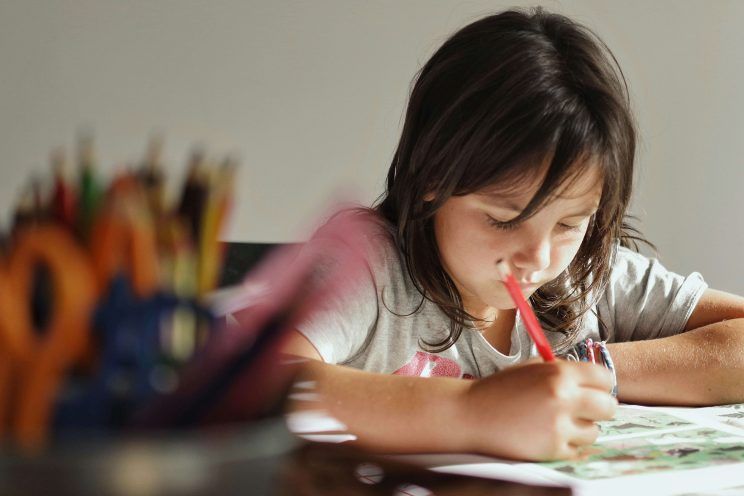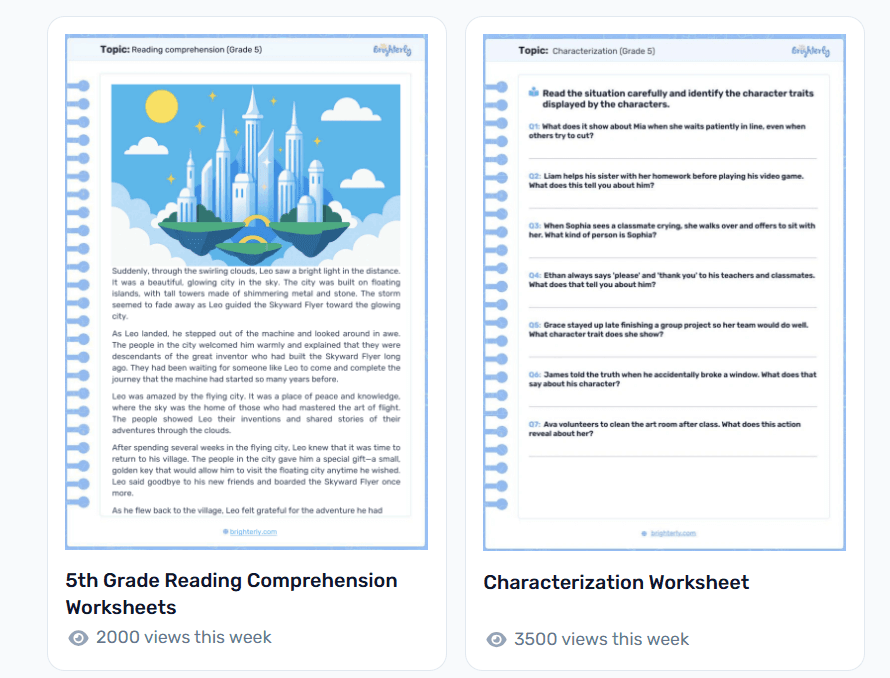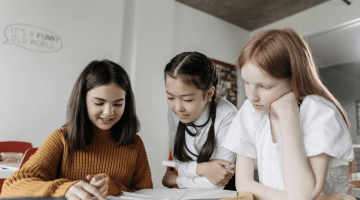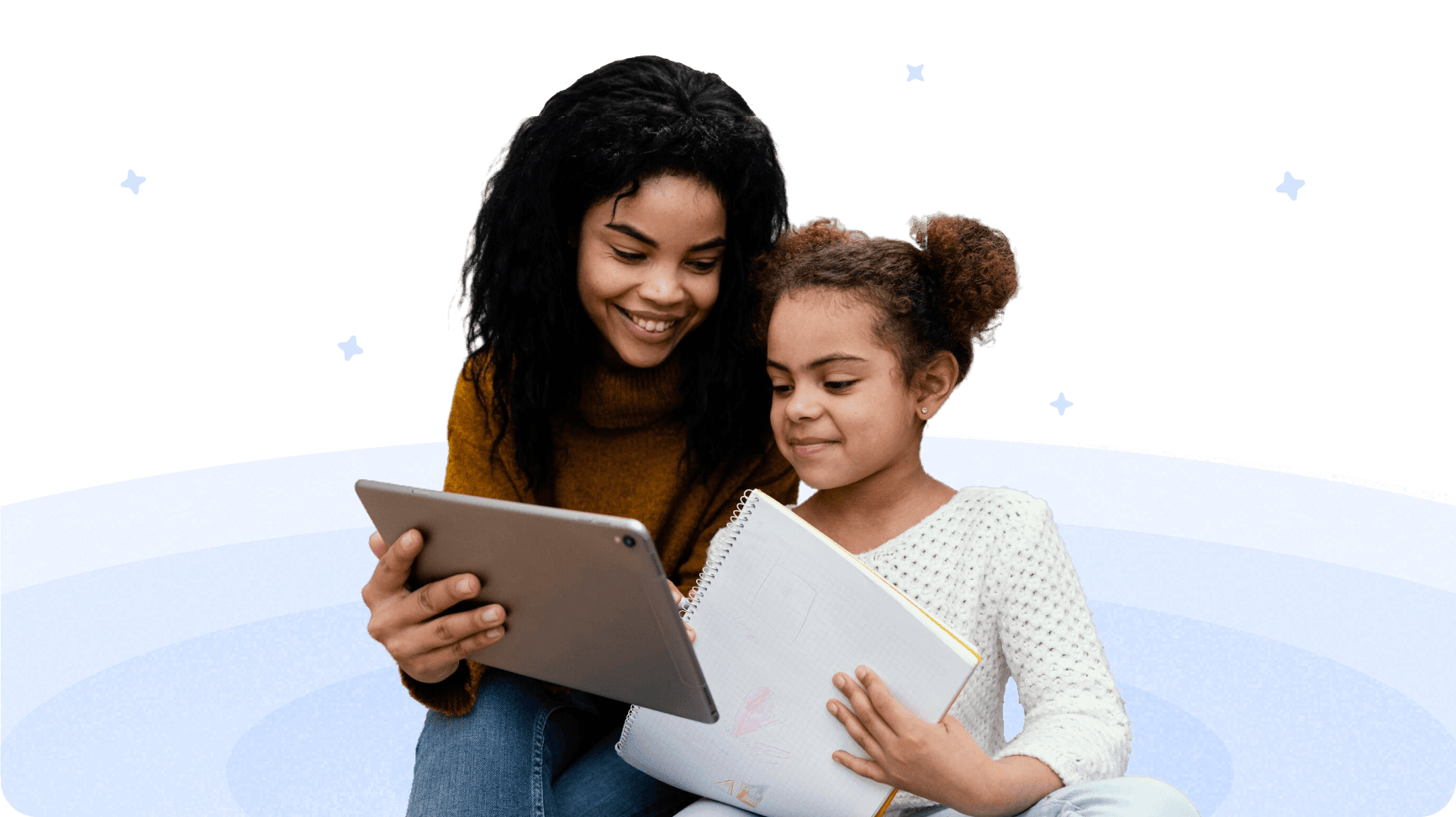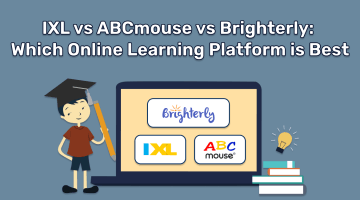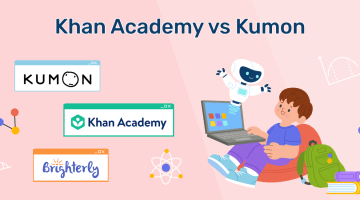What Is Narrative Writing? Types & Tips to Improve Storytelling
reviewed by Laila A. Lico
Updated on October 16, 2025
Through years of my teaching experience, I’ve seen multiple cases when the seemingly easy style called narrative writing turned into a challenge for kids. It’s particularly because it strongly relies on creativity and also requires a solid background knowledge.
But no worries — I’ve completed this guide to help kids master narration and turn their texts into a powerful weapon.
Key points:
- Many parents wonder what is writing narratives and why their child needs it. First and foremost, it’s a literary form that requires building a solid plot line and tone while involving creative thinking and careful planning.
- Narrative writing contains distinct elements and purposes that should be first studied in theory to complete a successful text.
- For those aiming to master the art of narration, addressing a highly skilled tutor may be the best solution. Brighterly teachers are some of the best helpers in this regard, focusing on 1:1 cooperation and live assistance.
What is narrative writing?
Narrative writing is the type of fiction meant to tell a story. It can reflect both actual and imaginative events. The main purpose of this text type is to grasp a reader’s attention and help them visualize the events described.
Note: Interestingly, the research has found that the results of narrative writing sessions at schools directly depend from the visuals kids see when they receive their tasks.
What is a narrative story?
A narrative story is the description of sequential events, which can be both real and fictional. Such a story would entail several must-have elements like characters, setting, and plot, and can be told both in writing and by images.
What is the purpose of narrative writing?
- To inform
- To persuade
- To entertain
It also usually aims to connect a reader to a story character, asking them to live through the events, moralizing on the potential and actual decisions and outcomes.
Now that you know what is narrative writing, let’s take a closer look at some of its most common aims:
- While informing readers about something, narrations provide a more understandable way to convey facts. Moreover, reading a narrative text is often more pleasing than diving into pure factual coverage or dates. So, yes, narrative style can also be used for teaching.
- The persuasive narrations aim to convince a reader that one point of view is better than the other. To write such a text, your child must have a clear perspective and several strong pro arguments in their arsenal.
- The main aim of an entertaining narration is to bring joy. That’s where creativity takes the most significant part, as kids have to create relatable stories with human-like characters that would appeal to a broad audience.
Taking all this information into account, we can now state that narrative writing isn’t just about ANY story, as it requires a good dose of planning and understanding the context. And of course, such a text won’t exist without a pinch of imagination.
That said, most kids need professional guidance from a person who knows how to teach narrative writing.
How to teach narrative writing at home and with Brighterly?
The Brighterly math and reading platform can provide necessary guidance for kids who struggle to understand the components of narrative writing and want to master this style. Lessons here are held 1:1 in an online format, which guarantees maximum personalization and a friendly atmosphere.
Here’s what Brighterly has to offer in this regard:
- The e-platform is exclusive in its approach towards picking reading tutors. Only those with a solid grasp of the ELA areas and an in-depth understanding of kids’ psychology are invited to join their teaching team.
- All lessons in the Brighterly reading program are specifically tailored to what your kid needs. Want to finally understand the narrative writing meaning or master the art of writing a strong and convincing narration? Clarify your requirements during the initial evaluation or in an oral form to your tutor, and they’ll design the lessons to satisfy your needs.
- Brighterly implements teaching narrative writing without contradicting what kids usually cover in their school grades. All of their lessons align perfectly with the US-accepted school schedule requirements.
- Last but not least, Brighterly is the goldmine of FREE learning resources. For example, you can get lots of practice with their reading worksheets or check the current knowledge level with reading tests — all with immediate access and without registration.
Now you know that a good story emerges when all elements of narrative writing fall into place. So, why not help your kid with them?
Types of narrative writing every child should know
Writing a narrative with linear storytelling
Linear narrative is often called traditional. Plus, it’s the most logically coherent type, which unveils events one by one, telling a story as if it evolves in the real world. It’s the most common narrative writing style in novels, short stories, and even cinematic pieces.

Texts written with this type of narration usually begin with the introduction of characters, setting, and background. Then, they evolve through a sequence of logical and predictable events, leading to the climax and conflict resolution.
Writing narratives with a nonlinear narration type
As opposed to linear narration, the nonlinear style mixes and jumbles different timelines and perspectives. It commonly includes reminiscences of past events, flashbacks, and flash-forwards.
In simple words, the narrative stories landing in this group will mix the timing of the events. And a reader’s part is to put them in a chronological order in their heads to understand how the action evolved.
Nonlinear writing samples are usually deeper, more insightful, and philosophical. Flashbacks generally serve to show a glimpse into a character’s motivation, past events that shaped them, and memories they obtain.
Note: According to the research, about 6 or 7 is the most accurate age to start introducing kids to nonlinear narrations. However, children at this time still need solid support to clarify the order of events.
What is a narrative written with the descriptive type
The primary purpose of narrative writing of the descriptive type is to paint a vivid picture in a reader’s mind, immersing them in a story and creating the feel of participating in it. That’s why these texts include vivid imagery and sensory details.
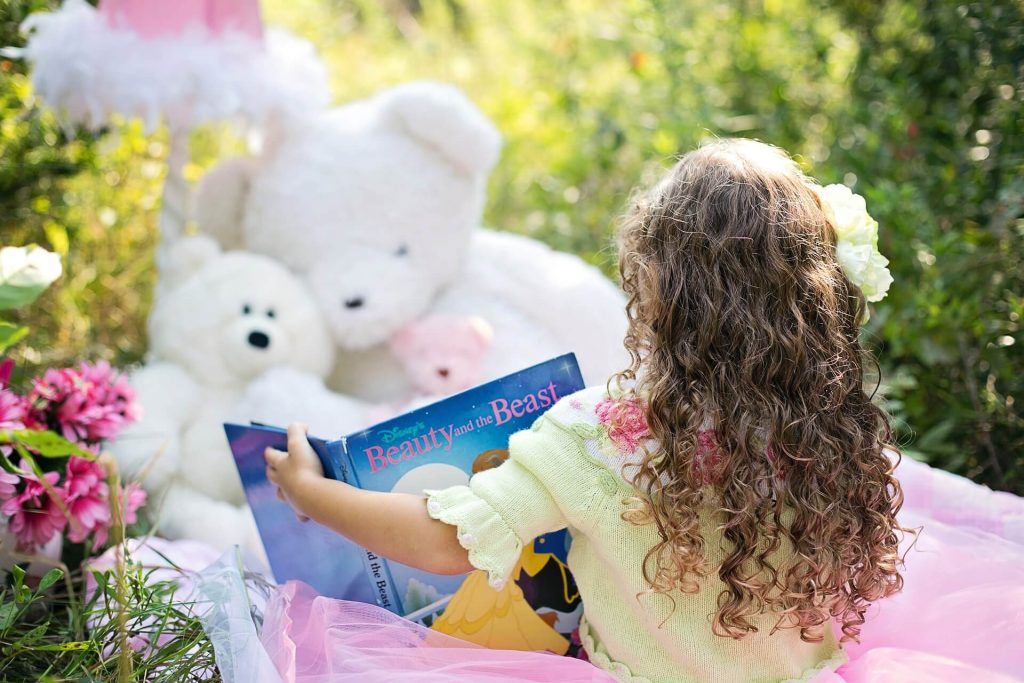
Considering its specificity, this type of narration commonly uses descriptions that appeal to readers’ sight, smell, and taste. It’s also rich in stylistic devices like metaphors, similes, personifications, and so on. If you thought that it sounds like an excellent opportunity to expand one’s vocabulary, you got it just right.
Writing a personal narrative with the viewpoint narration
The type is just what it sounds — a story told from and through the perspective of a specific character. So, an author chooses the narrator and describes all the events from their point of view, introducing subjective opinion. Logically, a reader will also be influenced by this perspective.
This narrative writing style obtains a good dose of flexibility. Thus, a narrator can view the events from afar or directly participate in them; describe pure actions only, or introduce judgments on them. The reader’s role also becomes substantial in this case, as they have to outline their own opinion without being affected by biased judgments.
Key characteristics of narrative writing
The key characteristics of narrative writing include plot, characters, settings, conflicts, and theme. These elements combine to create a complete story, aimed to engage, convince, or tell an author’s point.
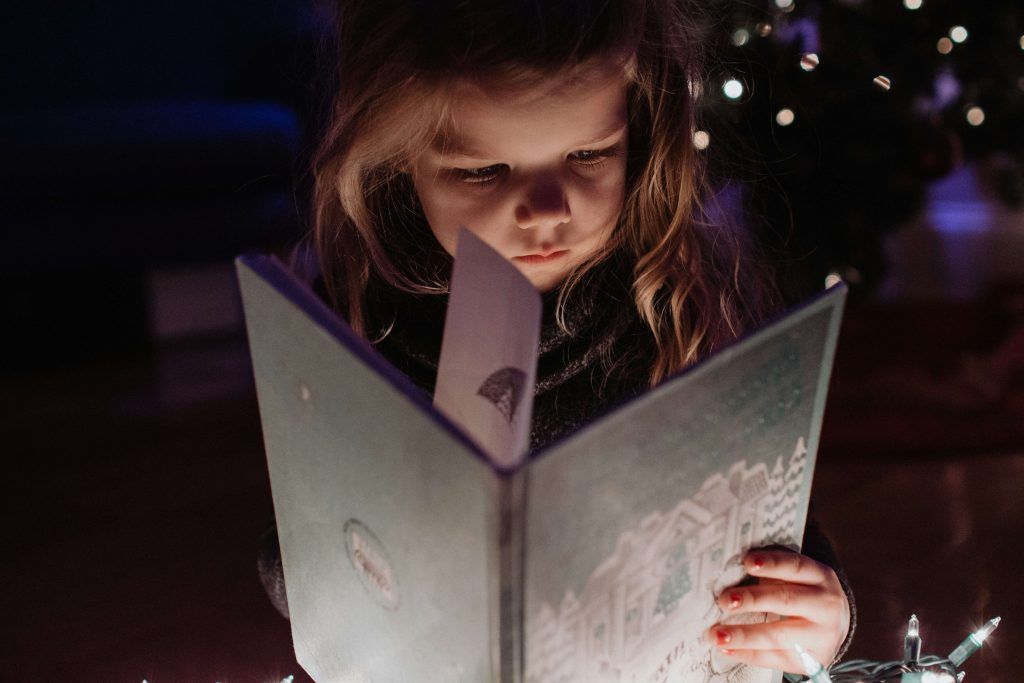
Now, let’s get deeper into these characteristics of narrative writing, shedding light on their functions:
- Plot is the sequence of events described in a story.
- Characters are the main actors who develop as the story progresses. Interestingly, those are not necessarily humans. A list of characters can also include animals or even nature.
- Setting is where and when a story takes place.
- Conflict is the central problem that is revealed and progresses during the story.
- The theme is the main topic described, and also a moral that readers have to define.
What are the five parts of narrative writing?
As someone willing to define narrative writing and learn to write strong texts, your child should first grasp these five parts, understanding all of their nuances. So, let’s dig deeper into them, breaking each into parts and also highlighting the best narrative writing ideas you can use to practice at home.
Exposition

Many kids just starting to analyze narrative writing examples may think that exposition or the overall story background is boring. Some even dare to skip it altogether, which is a huge mistake.
In fact, exposition serves two strong purposes:
- It tells us when and where the story takes place. It can also introduce some background details on past events that led to the current situation.
- It’s often where the hook is contained, drugging readers into the narrative.
Then, this narrative writing format part can be divided into:
- Direct exposition, which says exactly what is happening in the story.
- Indirect exposition occurs when the setting and context are revealed through dialogue or characters’ flashbacks.
How to teach narrative writing by introducing exposition?
- Before starting writing, think out all the details. What is the scenario? When did the action take place? Who are the actors? Eventually, what is a narrative writing? It’s a well-organized story that also requires good planning.
- When ready with all the background details, encourage the child to create the complete image of their characters. The main character requires most attention, though. It’s always a good idea to introduce them in the first paragraph, describing their origin and explaining why they are your story’s hero.
- Work on the tone of your exposition, because it’s where you set the mood for the whole story. Is it satirical, explanatory, or philosophical? Don’t trick readers, but let them see what they are into from the very beginning.
Rising action
This narrative writing part is where all of the action evolves. It takes the text part when all the settings are clarified, but before the climax or the central conflict of the story. It’s also where kids have to reveal all of their creativity to hold a reader.
How to learn the types of narrative writing: Rising action
- Help kids pinpoint the problem or goal that drives the story early on. Whether it’s a mystery to solve or a challenge to overcome, this core conflict is what fuels all the action.
- You should build the story tension prudently. For this, encourage a child to think about smaller problems or complications they’d like to include in their story. Each new event should make the reader a little more curious or worried.
- Remember that, along with the action, you should also develop your characters. You can make them braver, more confused, or even more determined. This is how characters start to come alive.
Note: You can use writing apps for kids to improve your child’s ability to write narration. Both free and paid, you’ll find something for yourself in the article.
Climax

Finally, here comes the part to reveal all of the emotions you saved during teaching narrative writing. It’s the most intense moment, where the central conflict of the story comes to an end. And… you can read the word “conflict” literally, as the climax part often involves confrontation, which shows the epitome of character evolution.
When explaining narrative writing for kids, show them that the climax is the bridge connecting the rising action and the falling action, and its intensity should correctly reflect its significance.
Teaching narrative writing for students by explaining the climax
- To actually identify that climax moment, you should guide the child to find the scene where the main question of the story is answered — will the hero win, lose, or change?
- Instead of simply saying “he was angry” or “she was scared,” teach kids to use actions, dialogue, and vivid details that let readers feel the tension.
- The climax is all about the main character’s choices and reactions. Remind the kid to spotlight what the hero does and how they respond to the conflict.
Falling action
Like the calm after the storm, the falling action shows the aftermath of the climax. Where are the characters now? What are their feelings, expectations, and suppositions? This part is no longer about the tension, but about what one would feel after that pivotal conflict — either exhilarating or despairing.
Writing a narrative through composing a falling action
- You should first explain the falling action narrative writing definition to the kid. Thus, unlike the rising action or climax, the falling action should slow down the pace and allow readers to process the story’s outcomes.
- Falling action is often about characters’ growth. That’s why it’s necessary to encourage the child to highlight how the main character has changed or what they’ve learned through the story’s events.
- In this part, let characters express their feelings, doubts, or hopes. This gives the readers insight into the emotional aftermath of the climax.
Note: If you aim to cover other skills along with creating appealing narrations, addressing an ELA teacher is ideal. If you wonder, here’s a complete guide to what is an ELA teacher.
Resolution

Have you ever closed a book to experience an exact intense feeling at that moment? That’s a sign of a good resolution. This narrative writing format is there to remind readers of the main conflict and provide the author’s opinion on how it can be solved.
Interestingly, the feelings one can experience after reading the final narration lines are quite different: from the joy of achievement, to being baffled, dismayed, or angry. Remember, you’re the author, and you set rules here.
How to teach narrative writing by introducing exposition?
- One clear thing about resolution is that it should be emotional — not in the intense way as climax, but subtle yet strong. Resolution is the chance to leave a lasting impression, so don’t ignore it.
- Ever still, the resolution doesn’t need to be long — a few sentences can effectively wrap up the story without dragging it out.
- Encourage young writers to conclude in a way that feels complete, even if the story leaves some room for imagination.
Conclusion
Unfortunately, many kids perceive narrative writing as the easiest form of literary revelation, which doesn’t require much topic-specific awareness. But wrong they are! The whole process from picking appealing narrative writing topics to developing a strong resolution requires creativity and background knowledge. So, yes, just anyone rarely can write a strong narrative, but EVERYONE can learn to write one.
That’s where tutoring help can be just right. After all, the Brighterly platform allows you to book free reading lesson. So, why not take your chance and help the kid reveal their inner potential?

